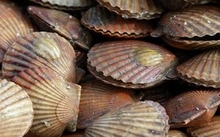
The programme, which in Seafish's view, failed to present a complete picture of the lengths the modern day fishing industry has gone to in order to protect the marine environment, called on viewers to march on Parliament on February 25 and demand the implementation of more MPAs from the Westminster Government.
Seafish however is urging caution to campaigners and asking for them to fully inform themselves of the facts before jumping on the latest celebrity led bandwagon.
Mark Gray, Head of Responsible Sourcing for Seafish, said: "Seafish supports the concept of Marine Protected Areas (MPAs), which can play an important role in protecting the biodiversity and productivity of our seas. However, MPAs need to have clear and measurable objectives, as MPAs designed for fisheries management may be quite different to those designed to protect marine biodiversity. When badly designed, areas closed to fishing can have unforeseen negative effects by displacing fishing activity elsewhere.
"Fishermen have been working alongside governments, scientists and environmental groups for years in order to establish Marine Conservation Zones of varying purposes and continue to do so.
"It is important therefore that people understand that MPAs must have a proper scientific based approach to their set-up before they can be implemented otherwise we could threaten the economic and social prosperity of the UK without making any significant strides in environmental improvement."
The National Federation of Fisherman's Organisations (NFFO), which represents fishermen's groups, individual fishermen and producer organisations in England, Wales and Northern Ireland, also spoke out about the programme.
The NFFO declared its support for the planned introduction of new marine conservation zones (MCZs) in UK waters, but cautions against a rush to designate over a hundred of them at a stroke.
The facts behind scallop dredging must also be understood. Mark Gray said: "Over 98 per cent of UK landed scallops are caught by vessels using towed fishing gear. There is a misconception that scallop fishermen tow dredges or trawls over every bit of the sea bed. In fact, fishermen know where the species are found and make rationale decisions about where to go scallop fishing.
"Seafish continues to work closely with UK scallop fishermen. Through research and co-operative projects, we support the adoption of techniques and technologies to minimize environmental impacts. Through the adoption of best practice, we believe that ultimately it should be possible to ensure a responsible and sustainable future for this valuable industry."
Seafish, which worked with producers Keo Films to provide footage and advice during the making of the series, was disappointed but not surprised at the content of last night's programme. Given the importance of the issue, and the way it had sought to portray scallop dredging in particular, Seafish has produced a pack of information for followers of Fish Fight to look through and arm themselves fully with the facts on MPAs, dredging and other important areas likely to be highlighted by the programme in an effort to bring some semblance of balance to a debate.
The information can be accessed via the Seafish website and ranges from responsible sourcing guides, to scallop dredging maps and Seafish's independent guide to MPAs.





